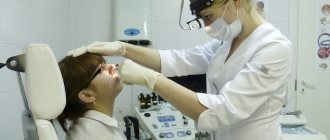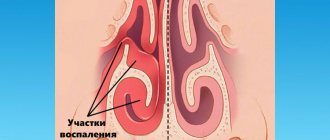While some women dream of carrying and giving birth to a child, others are looking for ways to terminate an unwanted pregnancy. Modern medicine and pharmacology provide a huge selection of contraceptives that can prevent conception, but despite this, the number of abortions performed by doctors is constantly growing. According to statistics, about 20 thousand women a year get rid of an unwanted pregnancy. It is difficult to give this act an unambiguous moral assessment, however, from a scientific point of view, an embryo is the first stage of development of the human body and is fully equated to a newborn child, and abortion is murder. Morality does not force a woman to forcibly follow her own interests, but demands that she take responsibility for her actions without paying with the life of an unborn person. On the other hand, such a serious medical intervention as abortion always has an extremely detrimental effect on the woman’s body, especially on the organs of the reproductive system. The consequences can be extremely dire, ranging from hormonal imbalance and the development of various neoplasms, ending with infertility. Therefore, if a woman has doubts about carrying out this procedure, first of all, it is necessary to consult a gynecologist who will tell you about all the possible risks. There are certain periods at which the procedure can be carried out by medical professionals, and various types of abortions are offered; let’s look at them in more detail.
When is an abortion performed?
Unlike most other countries, abortion is a legal operation in Russia. It is done at different times:
- at the request of the woman - up to 12 weeks;
- for social reasons - up to 22 weeks;
- for medical reasons - at any time.
Social indications include conception as a result of rape, being in prison, disability of the child’s father or his death. Medical – a condition that threatens the woman’s life, or serious developmental disorders of the fetus. For example, oncology, frozen pregnancy, AIDS, Down syndrome in a child, etc.
There are three main types of abortion practiced today:
- medicinal (up to 7 weeks);
- vacuum aspiration (up to 12 weeks);
- surgical curettage (curettage) (up to 22 weeks).
Sometimes the vacuum technique is combined with curettage of the uterine cavity with a curette (after 6 weeks). The choice of a specific method of termination of pregnancy is made by a doctor after an examination.
Until what time can you have an abortion?
Abortion is the artificial termination of pregnancy before 22 weeks. This is a medical procedure that is not aimed at treatment, but at stopping the vital activity of a living organism. If we look at pregnancy week by week, it is divided into two stages: embryonic (up to 8 weeks) and fetal (from 9 weeks until birth). In the first case, the embryo is called an embryo, and in the second, a fetus in which internal organs and systems are actively forming. Starting from 5 weeks, the heart is formed, the contraction of which can be heard during an ultrasound examination. Despite this, abortion can be performed up to 12 weeks and no later than 22 weeks.
According to the regulations of domestic legislation, abortion up to 12 weeks is considered early, and can be carried out if desired by any woman. After 12 and up to 22 weeks, the procedure is allowed to be performed only for social or medical reasons, including:
- rape of a woman;
- fetal death;
- ectopic pregnancy;
- severe pathologies of the fetus that are incompatible with life;
- maternal illnesses that will not allow you to bear and give birth to a healthy child;
- the need for another medical procedure or surgery that is incompatible with pregnancy.
Before a late-term abortion is performed, a meeting of a medical commission is held, which decides to terminate the pregnancy, eliminating risks and possible complications. It is important to understand that having an abortion early or late can have irreversible consequences for a woman’s health and the doctor must be informed about them.
Medical abortion
This type of abortion is considered the safest. It involves the use of the drug Mifepristone in combination with prostaglandins. Efficiency depends on the duration of pregnancy: up to 42 days - 96-98%, 43-49 days - 91-95%, more than 49 days - about 85%.
Mifepristone blocks the main pregnancy hormone, progesterone. After taking the drug, the contractility of the uterus increases, the production of interleukins is stimulated, and the sensitivity of the myometrium to prostaglandins increases. As a result of this, the fertilized egg is rejected from the inner lining of the uterus and leaves the body. Prostaglandins are used to enhance the effect of Mifepristone.
Medical abortion is carried out in several stages:
1 visit – consultation and examination;
2nd visit – taking the drug (can be combined with the initial appointment);
3rd visit (after 1-2 days) – repeated administration of the drug (can be done at home);
4 visit (in 1-2 weeks) – control visit.
Medical abortion
At the final stage, a clinical examination and ultrasound control are carried out to check the results of the abortion. In case of incomplete abortion or ongoing pregnancy, vacuum aspiration is used.
Complications of abortion
more about the early and delayed consequences of abortion in our separate article.
Complications of medical abortion
- uterine bleeding requiring instrumental evacuation of the uterus in a hospital (vacuum aspiration of the uterine cavity) and the use of uterine contractions;
- incomplete abortion (remnants of the fertilized egg are also removed using vacuum aspiration of the uterine cavity in a hospital);
- infectious complications (the risk of their development is less than 1% of cases);
- progression of pregnancy in a situation where rejection of the fertilized egg has not occurred.
Vacuum aspiration
This method is also called mini-abortion. It is more gentle compared to curettage, since it does not involve the use of a sharp obstetric curette and does not injure the walls of the uterus. Its essence lies in the vacuum sucking of the embryo from the uterus. The procedure is as follows:
- a tube from a vacuum aspirator is inserted into the uterine cavity;
- after creating negative pressure, the fertilized egg is sucked out.
Vacuum aspiration
When the pregnancy is more than 6 weeks, the cervix is dilated using local anesthesia, since the size of the fertilized egg requires the use of a large-diameter vacuum suction nozzle. Sometimes such manipulation is required for nulliparous women.
Usually the operation lasts about 5-10 minutes, after which the woman is under the supervision of medical staff for an hour. A week later, a second visit to the doctor is required to assess the results of the abortion. If fetal remains are detected, the uterine cavity is curetted.
Abortion methods
To receive a referral for an abortion, a woman must undergo a series of medical tests, including:
- a blood and urine test for hCG levels will help exclude ectopic pregnancy;
- Ultrasound of the pelvic organs;
- blood for STDs: syphilis, HIV, hepatitis B and C;
- vaginal smear;
- general blood and urine analysis.
The results obtained allow us to obtain an accurate picture of pregnancy, identify concomitant diseases, and determine possible disorders in the development of the fetus.
In medical practice, there are different methods of abortion that are used in a particular case. In addition to third-party intervention, termination can occur independently - a miscarriage, which is the result of an unsuccessful pregnancy or the impact of certain factors on the fetus or the woman’s body.
In other cases, we will talk about medical abortion, which can be carried out in several ways. Abortion happens:
- medicinal - consists of taking certain hormonal drugs that are taken according to a strict regimen;
- mini-abortion - using a vacuum aspirator;
- instrumental - curettage of the uterine cavity with vacuum aspiration of the fertilized egg;
- minor caesarean section.
Another method of abortion is saline, which consists of introducing a saline solution into the fetal bladder, it kills the fetus. After 2 days, hormonal drugs are prescribed to induce labor. In practice, this type of abortion is not encouraged, since there have been cases when during childbirth, the fetus was alive, but had severe abnormalities.
There are different methods of abortion, but the choice of the method used is up to the doctor and the woman, depending on the duration of pregnancy and the general health of the woman. The shorter the period, the lower the risks. And do not forget that starting from the 8th week, the fetus develops a nervous system, heartbeats are clearly audible, and by the 16th week it already hears sounds and can react to them. Therefore, if pregnancy is unwanted or there are medical indications for its termination, there is no need to waste time.
Medical abortion
Medical termination of pregnancy is recommended before 7 weeks of pregnancy. It consists of taking certain medications that are prescribed by the doctor individually for each patient. These medications contain substances that block the functioning of the hormones progestin and prostaglandin, the deficiency of which causes termination of pregnancy. In practice, Mifepristone tablets are most often used, then Misoprostol. The former lead to the death of the embryo, and the latter cause contraction of the uterus and remove the dead embryo from its cavity. These drugs are dispensed according to a strict doctor's prescription, as they have many contraindications and side effects. The dosage is determined by the doctor. After an abortion, 7 days later, a woman must undergo an ultrasound of her pelvic organs.
Women believe that medical abortion is one of the safest and does not require mechanical or surgical intervention, but this is far from the case. This procedure has a number of contraindications:
- ectopic pregnancy;
- more than 49 days since the last menstruation;
- bronchial asthma;
- pathologies of the adrenal glands;
- renal failure;
- diseases of the genitourinary system.
The danger is that after a medical abortion there is a high risk of developing uterine bleeding, as well as excessive contraction of the uterus, vomiting, nausea, heart rhythm disturbances and other complications. If there is a high risk of complications, taking medications to terminate a pregnancy should be carried out under the supervision of a doctor in a hospital setting.
Vacuum abortion
Mini-abortion (vacuum abortion) is a procedure to terminate an unwanted pregnancy; it is a gentle operation because it does not involve surgical intervention. It lasts up to 12 weeks and consists of vacuum suction of the embryo from the uterus using an aspiration catheter. The procedure eliminates damage to the mucous membranes and does not cause isthmic-cervical insufficiency or cervical injury. If the woman has not given birth before, it is performed using anesthesia. It takes no more than 1 hour. 7 days after the procedure, an ultrasound is prescribed, which will help rule out incomplete removal of the fertilized egg.
Vacuum abortion is contraindicated if:
- ectopic pregnancy;
- period is more than 12 weeks;
poor blood clotting;
- inflammation of the pelvic organs.
After the procedure, a woman may experience pain in the lower abdomen, menstrual irregularities, or hormonal imbalance. A mini-abortion prohibits reconception earlier than after 6 months, so the doctor prescribes hormonal contraceptives to the woman, which will prevent reconception.
Surgical abortion
Surgical abortion allows you to terminate a pregnancy up to 22 weeks. During the procedure, the contents of the uterus are physically scraped out along with the fertilized egg, which prevents further development of the embryo. Despite the 100% result, this type of abortion is performed in cases where other methods are ineffective.
During an abortion, the cervix is opened with special instruments, a curette is used to scrape out the fetus, and forceps may be used. If it is not possible to completely remove the embryo, it is removed in parts. Instrumental abortion is the most reliable, but also the most dangerous. It is performed under general anesthesia in a hospital setting.
Thanks to the capabilities of modern surgery, a hysteroscope can be used during the operation, which is inserted into the uterine cavity, eliminating the risk of damage to the endometrium, and guarantees that after the operation no unremoved fragments of the embryo will remain in the uterus.
The operation takes from 20 to 30 minutes, but after it is performed, the woman must spend several hours in the hospital under medical supervision. Normally, there should be no heavy bleeding, nausea, vomiting or severe pain in the lower abdomen.
Surgical abortion has some contraindications, including:
- poor blood clotting;
- pelvic organ infections;
- inflammatory processes.
After an instrumental termination of pregnancy, the risk of complications is quite high, and may be associated with a medical error or the internal health state of the woman herself. Common consequences include:
- menstrual irregularities;
- adhesions;
- obstruction of the fallopian tubes;
- hormonal imbalance;
- benign tumors;
- infertility;
- depressive states.
Complications after surgical termination of pregnancy may appear immediately after the abortion procedure or after a certain period of time. Therefore, doctors recommend that after surgery you pay close attention to your health, and at the first ailments, turn to specialists for help.
Which abortion is the safest?
There are no safe types of abortion, since any method has its contraindications and side effects. But if there is a need for it, it is better to terminate the pregnancy before 7 weeks. The longer the pregnancy, the higher the risks of complications and adverse effects on the body.
In the early stages, preference is given to medical or vacuum abortion, and in later stages, surgery. Regardless of the chosen technique, a woman after the procedure should follow a number of rules that will help the body recover faster and reduce the risk of complications:
- taking antibiotics to reduce the risk of inflammation;
- taking oral contraceptives to normalize hormonal levels;
- proper and healthy nutrition;
- In the first days after an abortion, avoid physical and mental stress.
If after an abortion there is severe pain in the lower abdomen, bleeding, vomiting, nausea, you should immediately seek medical help, do not self-medicate or wait until you feel better.
Consequences of abortion
Any type of abortion is stressful for the body, which is already preparing to bear a fetus, so there are consequences of such a procedure, and they do not always go unnoticed for the woman. Common complications include:
- uterine bleeding;
- secondary infection;
- mechanical damage to the uterine wall;
- high risk of developing endometritis;
- infertility;
- systematic pain in the lower abdomen;
- menstrual irregularities;
- the need to remove the uterus if it is severely damaged;
- hormonal imbalance.
Women believe that the most dangerous complication of abortion is infertility, but this is not entirely true, since other diseases are no less dangerous. A large percentage of women are unable to bear a child, and even if they are pregnant, they face constant spontaneous miscarriages.
Surgical curettage (curettage)
This method is the most reliable, but also the most dangerous. Usually the operation is performed under general anesthesia. The doctor dilates the cervix and removes the fetus whole or in parts using forceps. After this, the uterine cavity is scraped out with a curette. The duration of the operation is about 30 minutes, subsequent recovery is 2-3 days.
Surgical abortion
The danger of the method lies in the fact that the doctor works “by touch”. Because of this, injury to the uterus is almost inevitable, and with it a number of serious complications.
Abortion using a vacuum device
Usually they resort to it if no more than 5-7 weeks have passed since conception. This method is also considered the least traumatic for the female body, since the fertilized egg is sucked out of the uterus through a special catheter probe connected to a vacuum apparatus pump.
The advantages of vacuum aspiration (popularly known as mini-abortion) are obvious: a thin probe, which is inserted through the cervix without dilation, does not injure the female organs at all, and the rejection of the fetus, which still has weak connections with the walls of the uterus, occurs due to the creation of a negative pressure. It is only important not to miss the deadline and in the future make sure that the fertilized egg is completely extracted.
Modern technologies make it possible to carry out vacuum aspiration with virtually no consequences for the female body. However, this procedure has a number of contraindications:
- less than six months have passed since the previous abortion - any abortion;
- ectopic pregnancy;
- the pregnancy period is more than 5 weeks (maximum - 7) - in this case, the fertilized egg is already quite firmly attached to the walls of the uterus, which significantly complicates its peeling and suction;
- the woman suffers from any inflammatory diseases, including purulent infection of any part of the body.
The entire procedure is carried out under local anesthesia - general anesthesia is used only in exceptional cases - for 10-15 minutes. A woman can go home almost immediately. Next is maintaining personal hygiene and visiting the gynecologist at the appointed time.
Contraindications
The main contraindications to medical abortion are:
- age less than 18 years and more than 35 years;
- ectopic pregnancy;
- bronchial asthma and other pulmonary diseases;
- anemia - anemia;
- hemophilia – a blood clotting disorder;
- pregnancy due to hormonal imbalance or taking oral contraceptives;
- adrenal gland diseases;
- renal or liver failure;
- allergies or intolerance to drug substances;
- chronic diseases of the cardiovascular system;
- some gynecological diseases (endometriosis, fibroids, etc.).
Contraindications to vacuum aspiration:
- age less than 18 years and more than 35 years;
- inflammatory diseases of the genitourinary system;
- general infectious pathology;
- less than 6 months after the previous abortion;
- ectopic pregnancy;
- low blood clotting.
Surgical curettage, due to contraindications, practically coincides with vacuum aspiration.
Separate diagnostic curettage of the uterus
(separate curettage of the cervical canal and uterine cavity) It is used for diagnostic purposes for menstrual disorders, uterine fibroids, endometriosis, endometrial hyperplastic processes, endometrial and cervical polyps, dysplasia and cervical cancer, infertility. For therapeutic purposes, curettage of the uterine cavity is performed to stop uterine bleeding.
It is performed under intravenous anesthesia, depending on the specific situation, on certain days of the menstrual cycle.
The resulting material is sent to the laboratory for histological examination, depending on the results of which the issue of further management of the patient is decided.
What do you need to know?
Preparation for an abortion includes several mandatory examinations:
- examination on a gynecological chair;
- Ultrasound of the pelvic organs;
- vaginal smear for flora;
- general and biochemical blood test;
- Analysis of urine;
- coagulogram;
- blood test for hCG;
- blood test for HIV, syphilis, hepatitis;
- ECG.
This list can be expanded or narrowed depending on the presence of concomitant diseases.
Tests and algorithm for examining a woman before an abortion
- If menstruation is delayed and pregnancy is suspected, it is wise to start with a test for the presence of human chorionic gonadotropin hormone (hCG) in the woman’s body. At home, women use a regular “two strip” pregnancy test for these purposes, and when preparing an abortion, a blood sample is tested for hCG in the laboratory. The patient consults a gynecologist, the duration of pregnancy is clarified.
- Then an ultrasound examination (ultrasound) is performed, which determines the presence of a fertilized egg in the uterine cavity. Confirmation of intrauterine pregnancy by ultrasound is a prerequisite before an abortion (ectopic pregnancy is excluded).
- At an appointment with a gynecologist, the uterus is examined and the discharge from the genital tract is assessed. A smear is taken to determine the degree of vaginal cleanliness and oncocytology. If there is inflammation in the smear or inflammatory discharge during examination on the gynecological chair, sanitation of the genital tract is prescribed. It is impossible to perform an abortion if there is an infection - with instruments for performing an abortion and dilating the cervix, microorganisms from the vagina will spread higher into the uterus and fallopian tubes.
- A general clinical examination is also prescribed: a general blood and urine test, determination of blood group and Rh factor, blood testing for syphilis, HIV infection, hepatitis B and C.
- An ECG result and an examination by a therapist are needed before using intravenous anesthesia (usually an abortion at a period of more than 5 weeks requires complete pain relief).
- If a woman has concomitant diseases, the scope of the examination can be expanded. For example, in case of blood diseases, severe anemia, bleeding during surgical procedures, studies of the blood coagulation system are previously prescribed.
- When a patient first approaches an unwanted pregnancy, the gynecologist should refer her for a consultation with a psychologist, if there is one at the pregnant woman’s place of residence. In large cities, antenatal clinics are creating special medical and social rooms to support pregnant women who find themselves in difficult life situations.
Consequences
During a medical abortion, after taking the drugs, a woman may experience minor bleeding for several days, pain in the lower abdomen, nausea and vomiting, weakness, diarrhea, and fever.
Vacuum aspiration sometimes causes pain in the lower abdomen, menstrual irregularities, and hormonal imbalance. Early abortion usually does not lead to complications.
The most serious possible consequences are typical for curettage:
- pain in the lower abdomen;
- infection of the uterus;
- inflammatory processes in the genital area;
- puncture of the uterus followed by its removal;
- heavy bleeding;
- release of clots;
- hormonal disbalance;
- violation of cervical tone;
- adhesions, obstruction of the fallopian tubes;
- difficulties in carrying a pregnancy;
- infertility.
Pain in the lower abdomen
Infertility
Sometimes the consequences of abortion affect the health of future children. For example, scar changes can cause disruption of gas exchange in the placenta, and this will inevitably lead to oxygen starvation and subsequently – underdevelopment of the fetus.
What should you remember when choosing the type of abortion?
In order for a woman who wants to get rid of an unplanned pregnancy to have an alternative when choosing an abortion method, there are several things to remember.
The shorter the pregnancy, the greater the likelihood that the abortion will take place with minimal consequences. Therefore, you need to contact a gynecologist in the first days of a delayed menstrual cycle. This will allow you to timely assess the woman’s health and choose the most suitable method for terminating the pregnancy.
You should not trust advertising and advice from friends. For example, pills for medical abortion can be bought at a pharmacy. This is where the danger lurks - if they suddenly do not suit the woman or if the fertilized egg is rejected incorrectly, then even in the early stages you will have to resort to surgical abortion. Yes, and hormonal imbalance, the occurrence of which could be predicted during tests and examination of the medical record by a gynecologist, can cause enormous harm to a woman’s health.
When choosing an abortion method, you should not forget about such important things as the equipment of the clinic and the qualifications of the doctor.
The birth of a baby is a long-awaited event in the life of most women. However, there are situations when continuing pregnancy is undesirable for medical or other reasons. And a qualified gynecologist who is able to correctly assess the health status of his patient and then individually select for her the most gentle method of terminating a pregnancy should be a faithful adviser in such a situation.
Life after abortion
The recovery period after an abortion lasts from 3 weeks to six months, sometimes longer. Basic instructions:
- abstain from sexual intercourse for a month;
- exclude heavy physical activity for at least 2 weeks;
- do not use tampons;
- take vitamins;
- eat proper and healthy foods rich in vitamins and microelements;
- drink a lot of water (the norm is 30 ml per 1 kg of weight);
- exclude taking a bath, visiting a sauna, swimming in open reservoirs and pools;
- After resuming intimate life, do not allow conception for at least six months.
The main thing is not to ignore repeated visits to the doctor after an abortion and follow his recommendations: there is a high risk of disastrous consequences, even death.
Vacuum aspiration
Abortion using vacuum aspiration is performed up to 9 weeks of pregnancy. In rare cases, your doctor may recommend a vacuum abortion before 12 weeks. This is one of the most gentle and safe methods of early abortion. The procedure takes place with minimal trauma to the mucous membranes and tissues of the reproductive organs. The vacuum method of abortion significantly reduces the risk of complications after removal of the fertilized egg. The risk of infection, injury to large vessels and organ tissues is reduced.
The procedure is carried out using a vacuum apparatus - a device that creates negative pressure in the uterine cavity. During the intervention, a medical catheter is inserted into the cervical canal, with the help of which negative pressure is created. This provokes the separation of the fertilized egg from the walls of the uterus. The catheter is connected to an electric suction device, which removes the placenta, endometrium and embryo from the genital tract. The procedure is carried out until the uterus is completely cleansed, usually it takes 5-7 minutes.
An abortion is performed under local or general anesthesia. After the intervention, an ultrasound scan is required to ensure the success of the procedure (complete cleansing of the uterus). If ultrasound shows remnants of the placenta or fertilized egg, it is additionally recommended to perform curettage or repeated vacuum aspiration.
Ultrasound
The use of a vacuum apparatus has contraindications:
- chronic infectious diseases in the acute stage;
- inflammation, infection, suppuration of the pelvic organs;
- fibrinogen deficiency in the blood;
- The minimum period for repeat abortion using the MBA method is 6 weeks.
In rare cases, complications associated with hormonal disorders are observed after vacuum intervention. A woman may be concerned about changes in the abundance and color of menstrual flow, the frequency or absence of menstruation, cramps and pain in the lower abdomen.
Psyche and abortion
Abortion significantly affects a woman’s physical and mental health. It contributes to the emergence of a complex of mental disorders, united by a common name - post-abortion syndrome, which can last for years. Often, after an abortion, women experience feelings of guilt, inner anxiety, loss, emptiness and loneliness, plunge into a depressive state, and become irritable. Many of them are unable to cope with mental pain on their own. There may even be visions and hallucinations associated with the lost child.
Research from American university centers shows:
- 99% of women after an abortion grieve and feel loss;
- 92% blame themselves;
- 85% – overwhelmed by intense negative emotions;
- 81% – feel betrayed;
- 65% had thoughts of suicide;
- 23% tried to commit suicide.
Of course, every woman who faces such a choice must decide for sure whether she needs this operation, because abortion is a serious blow to the body. On the other hand, giving birth to an unwanted child often means dooming your life and his life to suffering, which is also not an option.
MAKE AN APPOINTMENT
[contact-form-7 id=”296" title=”Untitled”]
Abortion and contraception clinic in St. Petersburg - department of the medical gynecological association "Diana"
Make an appointment, tests or ultrasound via the contact form or by calling +8 (812) 62-962-77. We work seven days a week from 09:00 to 21:00.
We are located in the Krasnogvardeisky district, next to the Novocherkasskaya, Ploshchad Alexander Nevsky and Ladozhskaya metro stations.
The cost of a medical abortion in our clinic is 3,300 rubles. The price includes all pills, an examination by a gynecologist and an ultrasound to determine the timing of pregnancy.
Abortion concept
Abortion –
This is an interruption of the pregnancy process for a period not exceeding 28 weeks. In any other case, this is already premature birth.
Abortion is currently legal in many European countries. But still, the level of abortions in different countries varies significantly. In England, the Netherlands, and Japan, their number, thanks to the measures taken by government authorities and the formation of a certain public opinion, is minimal. In Russia, currently about 20% of couples are considered infertile, and the leading reason for this situation is the woman’s previous abortion. That is, we can say that every fifth woman who has previously undergone abortion surgery will not be able to conceive a child on her own in the future.
Of course, making the decision to undergo a surgical termination of pregnancy is very difficult. In addition to physiological disorders (gynecological diseases, reproductive disorders, etc.), a woman receives colossal psychological trauma, which can be difficult to bear until the onset of a serious depressive state. Therefore, in order to maintain her health (physical and psychological) with the goal of subsequently giving birth to a healthy child, any woman needs to know about existing methods of contraception and use them.
In Russia, the attitude towards contraception is quite negative. It is believed that the use of various methods of protection against pregnancy is harmful to the female body, and they do not provide a 100% guarantee. However, research conducted by specialists reflects a completely different picture.
The use of contraception is much better and safer for a woman than terminating a pregnancy. Moreover, modern methods of protection against unwanted pregnancy have a high degree of guarantee to avoid pregnancy.
Dangers
Each of these methods can cause dangerous consequences. Against the background of external interference in natural processes, hormonal imbalance often develops. It leads to endocrine disruptions and gynecological diseases, the treatment of which subsequently poses difficulties.
After an abortion, miscarriages are also observed subsequently. During its implementation, there are risks of infection and the development of inflammatory diseases. Such pathologies lead to tubal obstruction and, subsequently, to infertility.
Termination of the first pregnancy poses a great danger to the female body. It leads to endocrine disorders. Against this background, menstrual irregularities and mental disorders occur. Another risk of a first abortion is the inability to carry the child to term. This is due to the fact that the cervix is forcibly dilated. This disrupts its natural tone and elasticity. This factor affects the ability to bear a child, so miscarriages may constantly occur in the future.
Surgical abortion
The most dangerous way to terminate a pregnancy is surgically. The negative consequences after it are very diverse. Careless manipulations by the doctor may damage the cervix or the wall of the organ. Against this background, severe bleeding occurs, which will require emergency measures. In severe cases, the uterus must be removed.
The danger of surgical termination of pregnancy is associated with the risk of infection if sterility is not maintained. This likelihood is especially high in conditions of illegal abortions. The most dangerous consequence is sepsis, which can be fatal. Also, against the background of infection, endometritis often develops, which provokes infertility.
Since the process of surgical abortion involves curettage of the walls of the uterus, this leads to thinning of the walls of the organ. In the future, the process of fixation of the egg on the endometrium becomes more complicated. As a result, pregnancy does not occur. If after the operation a small amount of chorionic villi remains from the fertilized egg, then a placental polyp develops from them, which will need to be removed later.
Pharmaceutical abortion
When terminating a pregnancy using medications, there is a risk of hormonal disorders. They can cause uncontrolled bleeding, which is life-threatening. Infertility also often occurs after using this method.
Despite the non-invasiveness of pharmaceutical abortion, severe pain in the abdomen occurs after an abortion. In addition, negative consequences may occur:
- Inflammatory processes in the genital organs.
- Menstrual irregularities.
- Development of ovarian dysfunction.
If it is not possible to provoke a termination of pregnancy with medication, then the pregnancy continues to develop. As a rule, this can happen due to incorrect dosage of drugs or errors in setting the timing. Considering that the natural process is disrupted, spasms, pain, and inflammation occur, which increases the risks of fetal pathologies and death. In most cases, against this background, a decision is made to perform a surgical abortion.
Vacuum aspiration
Negative consequences after vacuum termination are most often associated with incomplete rejection of the fetus. In this case, severe pain and profuse bleeding from the vagina occur.
But even with successful vacuum aspiration, you should be prepared for the bleeding to continue for a couple of weeks. It is important that its intensity gradually decreases. Additional pain with a tendency to intensify is not normal and requires urgent consultation with a doctor. Normalization of the menstrual cycle occurs within 3-6 months.
After an abortion, rehabilitation is always required. First of all, antibiotics are prescribed to prevent inflammatory processes. To restore hormonal levels, medications and a special protein diet are used. To speed up rehabilitation, it is important to minimize the risks of contracting external infections. You should also maintain your health with a balanced diet and a healthy lifestyle.
It should be understood that there are no “safe” abortions. Any termination of pregnancy poses a threat to health and, sometimes, life. Preventing abortions is contraceptives, the choice of which is extensive today.
Features of performing a vacuum abortion and possible complications
All manipulations are performed on a gynecological chair. After anesthesia, the doctor treats the genitals, vagina and cervix with an antiseptic. Next, a special mirror is inserted and the uterus is fixed with bullet forceps. An instrument with an attached catheter is directed into the vagina, and the detected fertilized egg is removed.
The entire procedure takes 10 minutes, after which the woman recovers from anesthesia while in the clinic under the supervision of a doctor. If there are no complications, the patient goes home.
Immediately after an abortion, nagging pain is felt in the lower abdomen, which is associated with uterine contractions. This condition is considered normal, and swelling of the vagina is observed. The danger is represented by heavy bleeding that began several hours after vacuum aspiration.
If the operation is unsuccessful, the muscular walls of the uterus are damaged. This complication is called uterine perforation and is accompanied by severe pain, dizziness, fever, and weakness. Urgent surgical intervention is required.
Timing for a vacuum abortion
Such an abortion is performed up to 8-9 weeks of pregnancy inclusive, subject to the permissible size of the fetus.
Like other surgical procedures, this method has contraindications:
- infectious diseases accompanied by chills and high fever;
- ectopic pregnancy;
- chronic diseases of the pelvic organs during exacerbation;
- poor blood clotting;
- the last abortion was less than six months ago;
- ban on drugs.
A negative Rh factor is an aggravating factor for a mini-abortion.
What method of abortion is the safest?
Undoubtedly, the safest and most gentle modern method of terminating a pregnancy for the female body is medical abortion. The method became especially widespread back in 1990.
Advantages of medical abortion:
- The possibility of terminating an unwanted pregnancy at the earliest stages, when the fetus has not yet formed;
- Early timing of this abortion allows you to avoid surgical intervention and not injure the endometrium of the uterus.
The second safest option is vacuum abortion.
Instrumental abortion is the most dangerous due to the need for surgical intervention, which very often entails negative consequences for the health of the female body.
Medication method
Medical abortion is the termination of pregnancy using pharmacological drugs. Pharmaboration is carried out until the 8th week of pregnancy, since as the period increases, the effectiveness of the method decreases and the risk of complications increases. During a medical abortion, the processes in the patient’s body follow the “scenario” of a natural miscarriage. The woman feels cramps and pain in the lower abdomen, weakness, nausea, and bleeding. The procedure should take place exclusively under the supervision of a gynecologist. The doctor prescribes the dosage, explains how to take the medications, and monitors the patient’s condition immediately after taking the medications.
Medical abortion
The essence of the medication method is to take two types of drugs:
- The first pill blocks the production of progesterone, a key hormone during pregnancy.
- The second – enhances the contractility of the uterus.
As a result of such changes, the body rejects the fertilized egg, which is released naturally. The process of embryo rejection begins 24-48 hours after taking the drugs. A woman experiences pain in the lower abdomen, uterine bleeding begins - the first sign of fetal rejection.
During this period, the patient should carefully monitor the amount and content of bleeding. Normally, you will have to change pads every three hours, and the blood may contain clots, placental tissue, and mucus. After 7-10 days the bleeding stops completely.
Heavy bleeding
Two weeks after the procedure, a control ultrasound is performed to ensure that there is no residual tissue. An ultrasound examination may be needed earlier if the patient complains of:
- nausea;
- attacks of cramping pain;
- heavy bleeding;
- general weakness 5 days after taking the pills.
These are signs of incomplete cleansing of the uterus, which requires immediate surgical intervention.
Medical methods of abortion in the early stages make it possible to terminate a pregnancy with minimal risk to women's health. The fertilized egg is released naturally, so the mucous membranes of the uterus, cervical canal, and vagina remain intact. This avoids the most dangerous complication of abortion - tissue scarring, which leads to infertility.









